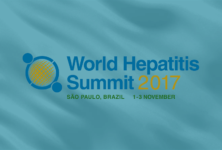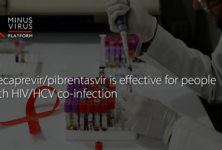Static picture in other countries conceals local change, especially in gay men
The annual number of new cases of HIV increased by at least 8% in 2015 in the whole of the World Health Organization’s European region, and by 60% in the last decade, according to last month’s annual surveillance report by the European Centre for Disease Control (ECDC) and WHO Europe.
A continued increase in new diagnoses in Russia was responsible for most of the increase. The previous year, as Aidsmap reported, 60% of European-region new cases were in Russia. In 2015 this increased to 64% of all cases.
The 98,177 diagnoses recorded last year in Russia equate to one HIV diagnosis for every 1493 Russians each year. In comparison, the 55,230 diagnoses recorded in the rest of the WHO region represent one diagnosis for every 13,157 people – one-ninth as many per head.
The number of new HIV diagnoses in Russia has increased 15% in one year, 57% since 2010, and 133% since 2006. Russia admitted this year that more than a million of its citizens have HIV. This is 0.8% of its adult population and is at least the same number as the USA in a country with 45% of the US population. At the current rate of increase, this prevalence will double to 1.6% in the next twelve years.
Excluding Russia, 46% of infections in the WHO Europe region were ascribed to heterosexual sex, 26% to sex between men, and 13% to injecting drug use – and less than one per cent to mother-to-child transmission. In the last ten years, infections in MSM have increased by 38% and in heterosexuals by 19%, but have fallen in injecting drug users by 38%. In Russia, heterosexual sex is the cause ascribed to half of all recorded cases and a third to injecting drug use.
Western, central and eastern Europe
In western Europe (which also includes Israel and Greece for the WHO’s purposes), and in the European Union (plus Norway, Switzerland and Iceland), the number of new cases of HIV have remained almost static. In western Europe about 30,000 new cases have been reported each year from 2010 to 2014 and in the EU 32,500. An apparent slight decline in 2015 (10% in western Europe and 8% in the EU/EEA) may be due mainly to delays in 2015 reports arriving.
Central Europe – which includes the former communist countries running from Poland down to the Balkans, and also Cyprus and Turkey – remains a low-prevalence area for HIV, but saw a 78% increase in infections from 2010. However there are signs that a feared acceleration of HIV in these countries may have slowed, with only a 4% increase registered between 2014 and 2015, though this does conceal larger increases in infections in gay men in some countries, including Bulgaria and the Czech Republic. However many of these countries still have the lowest rate of new infections in Europe, with Macedonia (one infection per 83,000 people last year) and Slovakia (one per 62,500) reporting the lowest rates.
In eastern Europe, which comprises all the former Soviet states (including Lithuania, Latvia and Estonia, which are in the EU) if Russia is excluded, the annual number of new diagnoses has stayed flat or fallen slightly (by 9%) since 2010, though the percentage due to heterosexual sex has more than doubled to 65% of the total and the proportion due to injecting drug use has fallen to 26% of the total. The slight overall fall in eastern Europe conceals big increases in some countries with relatively low HIV prevalence, including Georgia with a 48% increase since 2010, Cyprus with a 95% increase, and Belarus with a 116% increase.
Infections in men who have sex with men
In western and central Europe the epidemic is increasingly concentrating in men who have sex with men. In the last ten years, the proportion of infections due to heterosexual sex in western Europe has fallen by 41% and to injecting drugs by 48%, while the proportion due to sex between men has increased by 7%.
The proportion ascribed to sex between men in eastern Europe is still only 4% – but this in fact represents a tenfold increase. In some states such as Belarus and Estonia, infections in MSM were regarded as scarcely existing ten years ago – which means that the 58 cases recorded in Belarus and the 18 in Estonia last year represent proportionally big increases. In Russia sex between men still officially only accounts for a tiny proportion of new HIV cases – 1.5%. However the WHO does not regard Russian data as “consistent” and excludes it from some of its analyses.
The increases in infections in gay men seem to be starting to occur in some countries further east than previously. Georgia, for instance, saw a nearly 50% increase in the annual HIV diagnosis total from 2010 to 2015, a 12-fold increase in gay men, and a threefold increase in MSM from 2014. Belarus saw an 166% increase in HIV cases and a fourfold increase in gay men. Ukraine reports similar increases in gay men against a background of falling diagnoses in other groups. Increases in MSM infections were also reported from the central Asian countries of Kazakhstan and Kyrgyzstan. These increases are from a very low base, though, and may just represent that more men testing HIV-positive are prepared to admit they caught HIV from other men.
Other changes in individual countries
One country that has seen big relative increases in HIV is Turkey. The 2956 cases reported last year represent a 5.5-fold increase over diagnoses in 2010 and a 62% increase in one year. Because Turkey is a populous country (75 million), this still represents a low rate of infection (one per 37,000 head of population per year, less than a third of the UK’s rate), but Turkey may be a country whose HIV epidemic is worth watching.
In the EU, Latvia and Estonia had the highest rates. While Estonia’s formely explosive needle-driven epidemic continues to shrink, new HIV cases have increased by 43% since 2010 in Latvia. Notably, Latvia has been till very recently the only WHO Europe country whose national HIV treatment guidelines still recommended treatment should not start till CD4 counts had fallen below 200 cells/mm3.
Western European countries that saw increases in recent years include Malta, where the new HIV diagnosis figures leaped by more than 50% last year and have risen more than fourfold since 2010, though the absolute number of people with HIV in this small island country is still low, at about 300 people in total.
Another country that has seen significant increases since 2010 is Ireland, with a 47% increase relative to 2010 and a 43% increase from 2014 to 2015 – again, mostly in gay men.
The UK still reported by far the largest number of new cases of HIV of any country in western Europe to the ECDC – 6078 reported to the ECDC last year, way ahead of France, with the second highest number at 3943. However the annual diagnosis figure has fallen since 2005, as we reported last September, including for the first time a tiny (1%) decrease in diagnoses in gay men. The diagnosis rate per head of population, one per 10,638 people, was second only to Luxembourg’s in western Europe in 2014, but in 2015 was overtaken by Portugal, Ireland and Malta.
One needs to be cautious about saying HIV cases have fallen in specific countries because there is such variation in the number of delayed reports sent to the ECDC. However since 2010 there have been significant falls in HIV diagnoses, exceeding the falls seen in the UK, in France, Spain and Italy.
In France there appears to have been a significant drop of 30% in diagnoses notified between 2014 and 2015, and a 40% drop in gay men. Fewer than 1000 HIV cases were reported in French gay men last year, a third as many as in the UK. In contrast reported diagnoses have risen by 36% in Germany since 2010 (33% in gay men) and this country reported nearly as many new HIV cases as France last year.
Migrants, late diagnoses, and AIDS
Over a quarter (27%) of new diagnoses in the WHO Europe region were in people not born in the country where they were diagnosed. While two-thirds of this 27% represent people from outside Europe, primarily high-prevalence countries, infections in migrants from outside Europe fell by 29% in the last ten years while infections in intra-European migrants increased by 59%.
Nearly half of all new diagnoses (48%) were in people with CD4 counts below 350 cells/mm3. The proportion of these late diagnoses was 55% in heterosexuals and 37% in gay men. It was also 64% in those over 50 years old. Over a quarter (28%) were diagnosed with CD4 counts below 200 cells/mm3, and 12% had an AIDS-related condition at diagnosis.
Regarding diagnoses of AIDS (in both newly diagnosed people and the already diagnosed), there were 14,579 reported in the WHO European region last year. Diagnosis of any AIDS-related condition was extremely rare in central and western Europe – only one person per half a million head of population in central Europe, and one person per quarter million in western Europe. In contrast one person per 10,000 head of population had an AIDS diagnosis in Eastern Europe, including Russia. This means that AIDS diagnoses in eastern Europe were more common than HIV diagnoses in all western European countries bar Ireland, Luxembourg and Malta.
Interpreting the figures
The ECDC’s figures always need to be interpreted with caution. Russia, with its huge preponderance of HIV cases, reports a much more limited and more irregular set of figures to the ECDC than most other countries. The efficiency of HIV surveillance and the proportion of late reports vary widely from one country to another.
The proportion of people diagnosed also varies widely. If testing rates increase in a country, then it may look as if new infections are increasing when they are not. Some countries, including large western European ones like the UK and Germany, do not collect centralised, verifiable figures for HIV tests. In those that do, testing rates vary hugely. In Kosovo, for instance, just three HIV cases were reported last year – but that is probably because only 1312 tests were conducted, representing 0.07% of the population. In contrast, Russia performed over 28 million tests – meaning it tested more than 20% of its adult population. Generally, HIV testing rates are higher in eastern Europe than they are in central and western Europe. This tends to mean that higher testing rates compensate for lower reporting rates.
It is in central European countries like Poland (0.62% of the adult population tested) and Serbia (0.71%) that low rates of testing imply low rates of diagnosis – meaning that there may be considerably more people with HIV in these countries than appears to be the case.
Reference
The 2015 ECDC/WHO Europe HIV /AIDS Surveillance Report can be downloaded at http://ecdc.europa.eu/en/publications/Publications/HIV-AIDS-surveillance-Europe-2015.pdf


 ПОИСК ПО САЙТУ
ПОИСК ПО САЙТУ  поиск по ресурсному центру
поиск по ресурсному центру 



